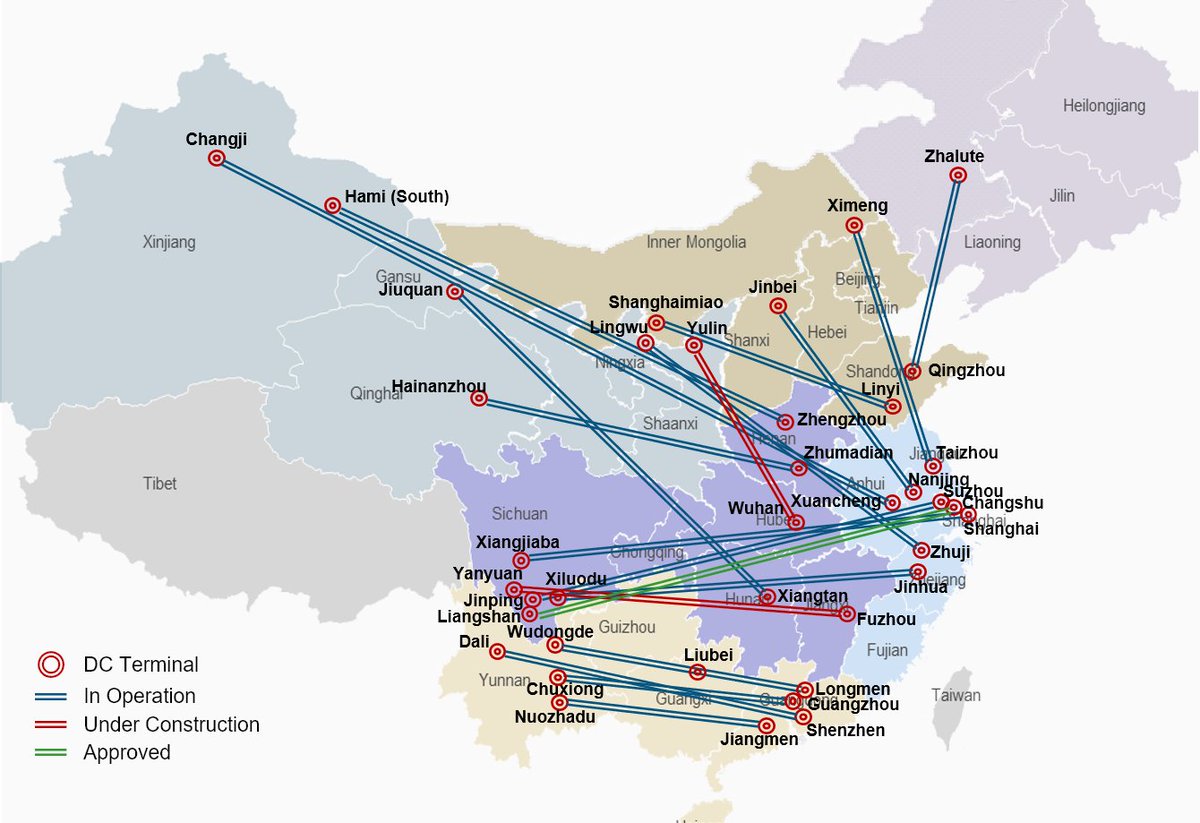
A few thoughts:
1)
Taishan is a Chinese plant built with French technology with a large French equity stake and Framatome is a French MNC offering technical services everywhere around the world (including the USA).
1)
Taishan is a Chinese plant built with French technology with a large French equity stake and Framatome is a French MNC offering technical services everywhere around the world (including the USA).
https://twitter.com/PAstynome/status/1404304725760045056
2)
Taishan is owned by CGN, which is on the US Entity List. Thus it would normally be forbidden to transfer US-derived technical information or data to CGN. A waiver may be obtained, however, for reasons of "operational safety", which is what Framatome is applying for.
Taishan is owned by CGN, which is on the US Entity List. Thus it would normally be forbidden to transfer US-derived technical information or data to CGN. A waiver may be obtained, however, for reasons of "operational safety", which is what Framatome is applying for.
3)
They're likely applying because either A. the information they are preparing to transfer originated in the US, or B. they don't want to impact their business in the US by doing work with CGN without full transparency. Probably both actually.
They're likely applying because either A. the information they are preparing to transfer originated in the US, or B. they don't want to impact their business in the US by doing work with CGN without full transparency. Probably both actually.
4)
So doesn't sound like Framatome reached out for *help* per se. Rather, they reached out for approval to conduct work to fix/mitigate the problem.
If there's no safety threat, as this paragraph starts, then the rest is just silly, superfluous, and alarmist:
So doesn't sound like Framatome reached out for *help* per se. Rather, they reached out for approval to conduct work to fix/mitigate the problem.
If there's no safety threat, as this paragraph starts, then the rest is just silly, superfluous, and alarmist:

5)
IMO, the technocratically-inclined nuclear specialists in the US DOE and NRC are way unlikely to take concern troll political cheap shots (unlike, e.g. the State Dept).
If they say that it's not an issue, then CNN et al. are left scrambling for innuendo to gin up concern...
IMO, the technocratically-inclined nuclear specialists in the US DOE and NRC are way unlikely to take concern troll political cheap shots (unlike, e.g. the State Dept).
If they say that it's not an issue, then CNN et al. are left scrambling for innuendo to gin up concern...
6)
As for why ambient dose around the plant is exceeding the approved levels, that could be due to any number of things. One or several cracked fuel rods in the core might do it. Cracked fuel rods are pretty common, usually due to manufacturing defects.
As for why ambient dose around the plant is exceeding the approved levels, that could be due to any number of things. One or several cracked fuel rods in the core might do it. Cracked fuel rods are pretty common, usually due to manufacturing defects.
7)
You wouldn't normally shut down a reactor and refuel for cracked fuel rods though. You keep operating, and do a bunch of physics calculations to restribute power in the core, and also redo environmental dose calculations. This work is *possibly* what Framatome is applying for.
You wouldn't normally shut down a reactor and refuel for cracked fuel rods though. You keep operating, and do a bunch of physics calculations to restribute power in the core, and also redo environmental dose calculations. This work is *possibly* what Framatome is applying for.
8)
The article doesn't cite any figures for the original allowable dose level or the doubled dose level. So it's pretty hard to tell if its anything to be concerned about. These allowable limits are usually set super low by several orders of magnitude, though.
The article doesn't cite any figures for the original allowable dose level or the doubled dose level. So it's pretty hard to tell if its anything to be concerned about. These allowable limits are usually set super low by several orders of magnitude, though.
9)
To illustrate that point: Compare normal plant worker dose per annum versus the dose level likely to cause an increase in cancer risk:
world-nuclear.org/uploadedFiles/…
To illustrate that point: Compare normal plant worker dose per annum versus the dose level likely to cause an increase in cancer risk:
world-nuclear.org/uploadedFiles/…
Update: AFP has a quote from EDF (the 30% owner of the plant) saying there is an issue with noble gas buildup, which supports the theory of failed (cracked) fuel rods IMO.
Detection of radiation from Xe-133 or Xe-135 is one of the main methods for detecting this.
Detection of radiation from Xe-133 or Xe-135 is one of the main methods for detecting this.
FYI about fuel failure for the curious.
https://twitter.com/pretentiouswhat/status/1404372199734083597?s=19
• • •
Missing some Tweet in this thread? You can try to
force a refresh




